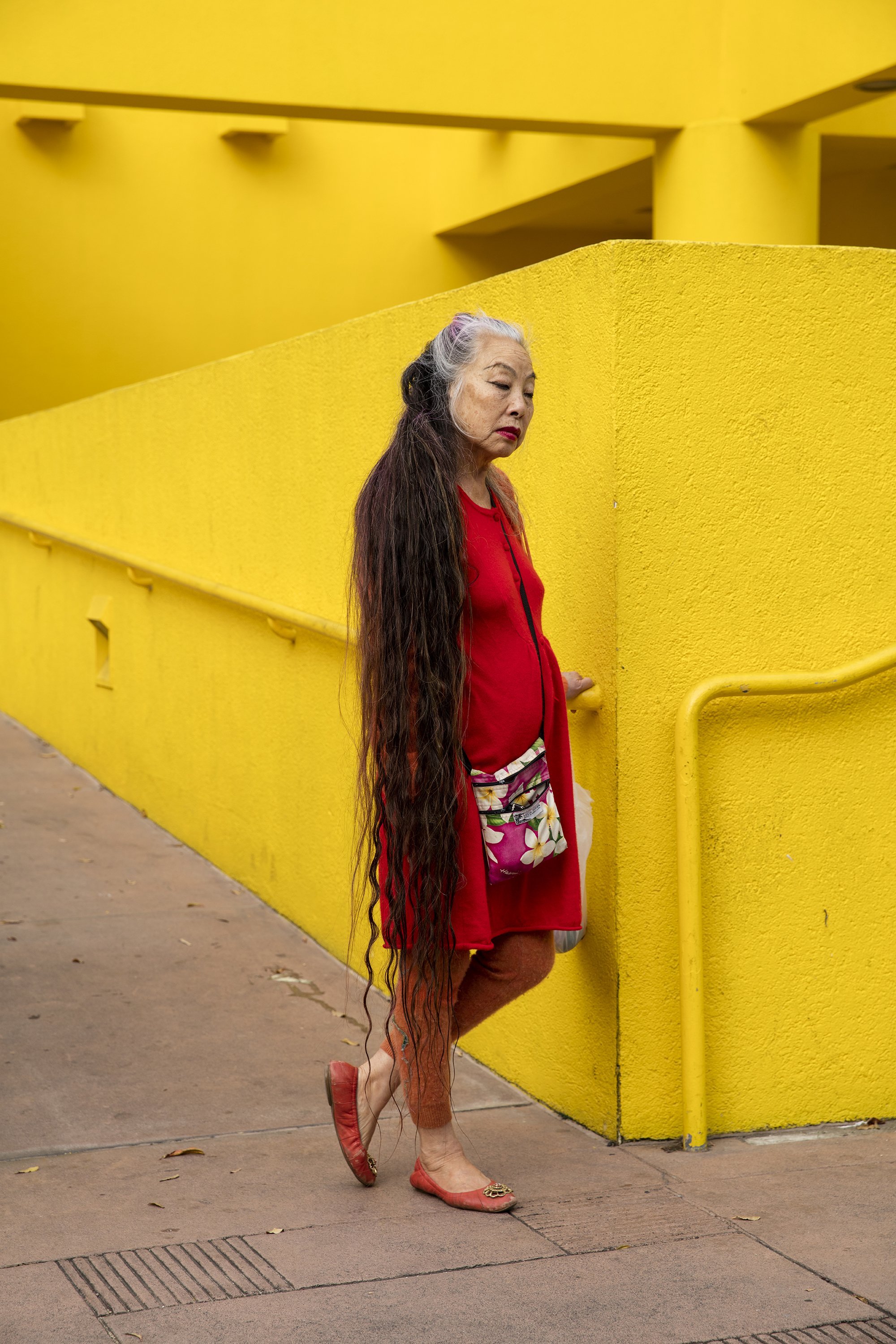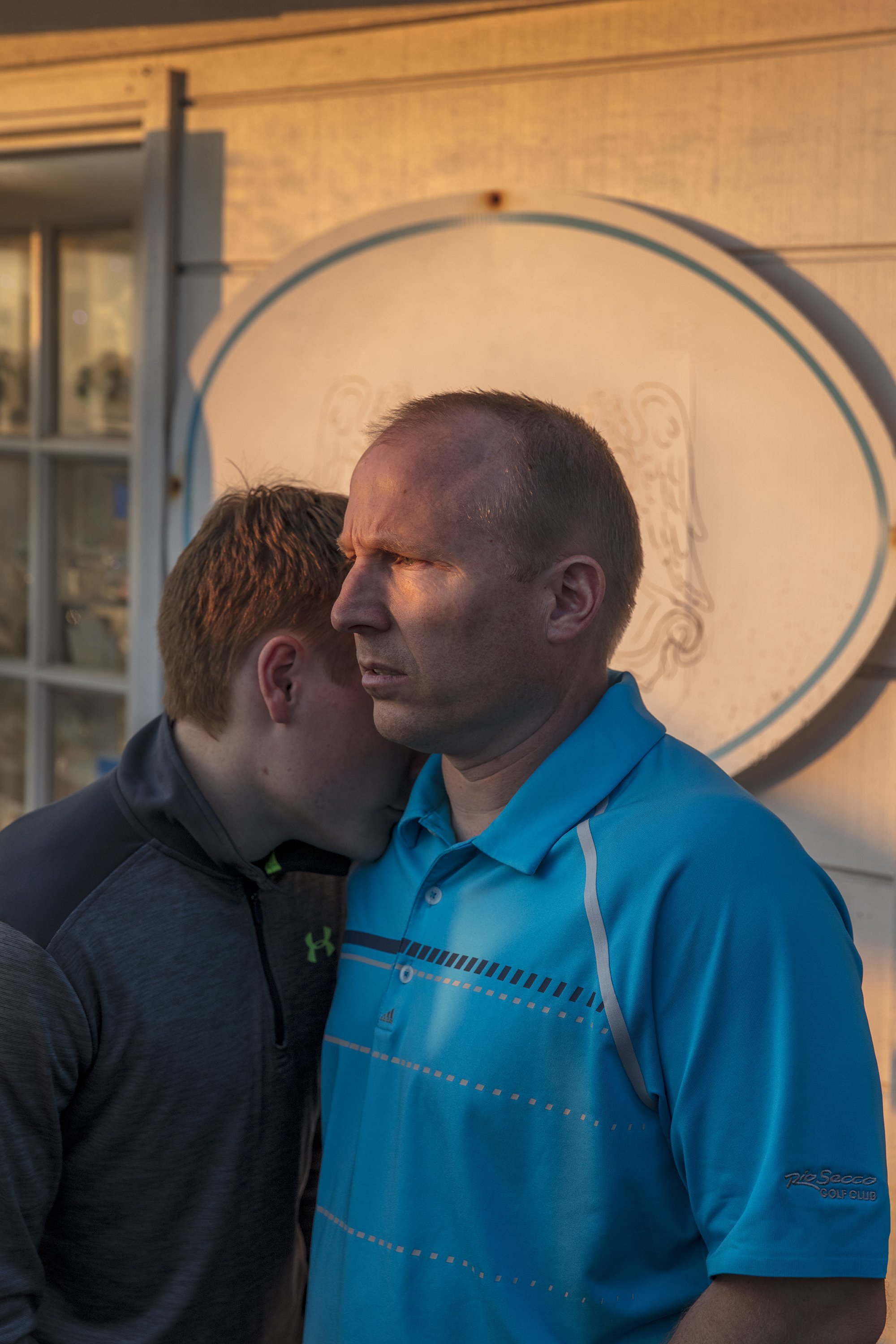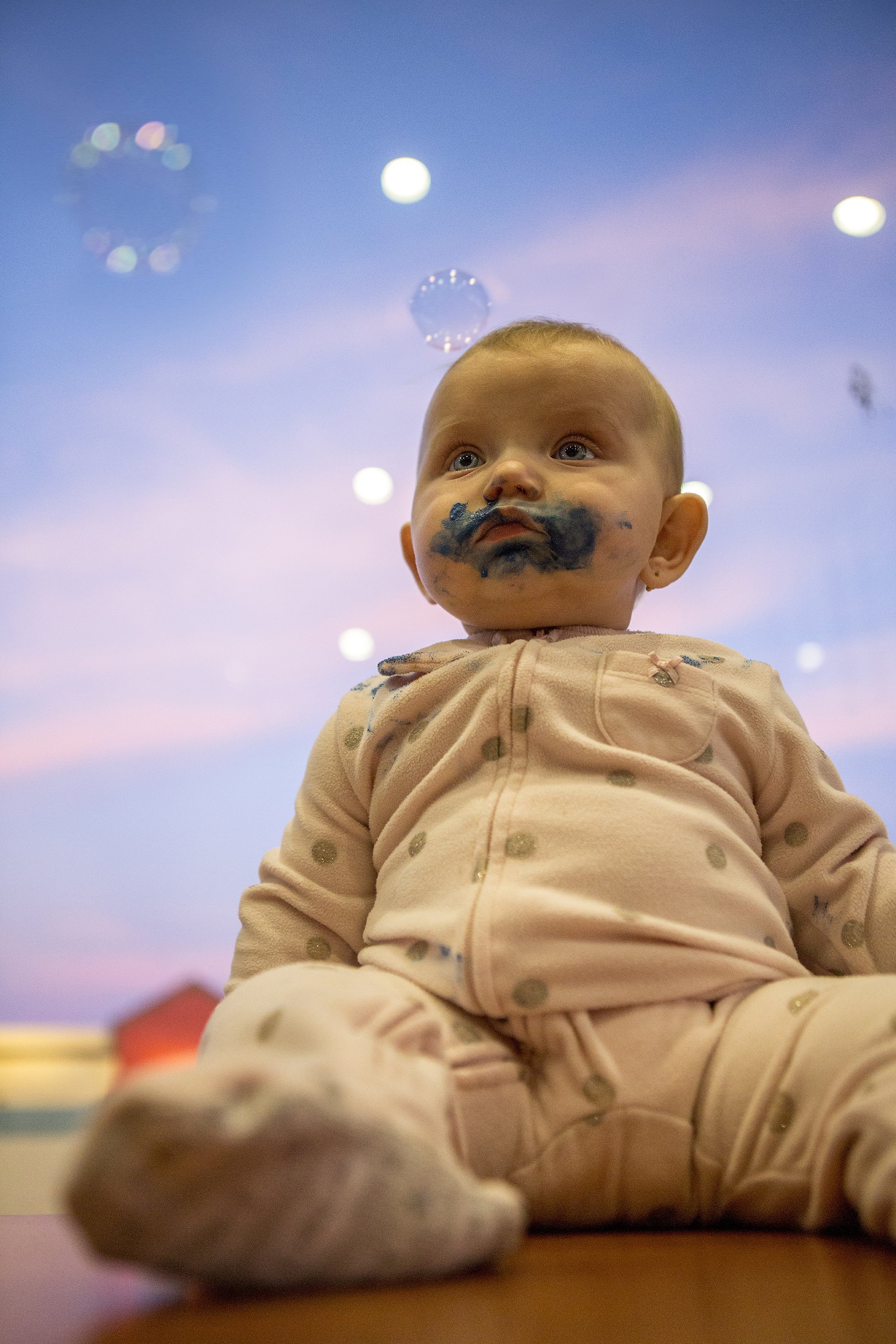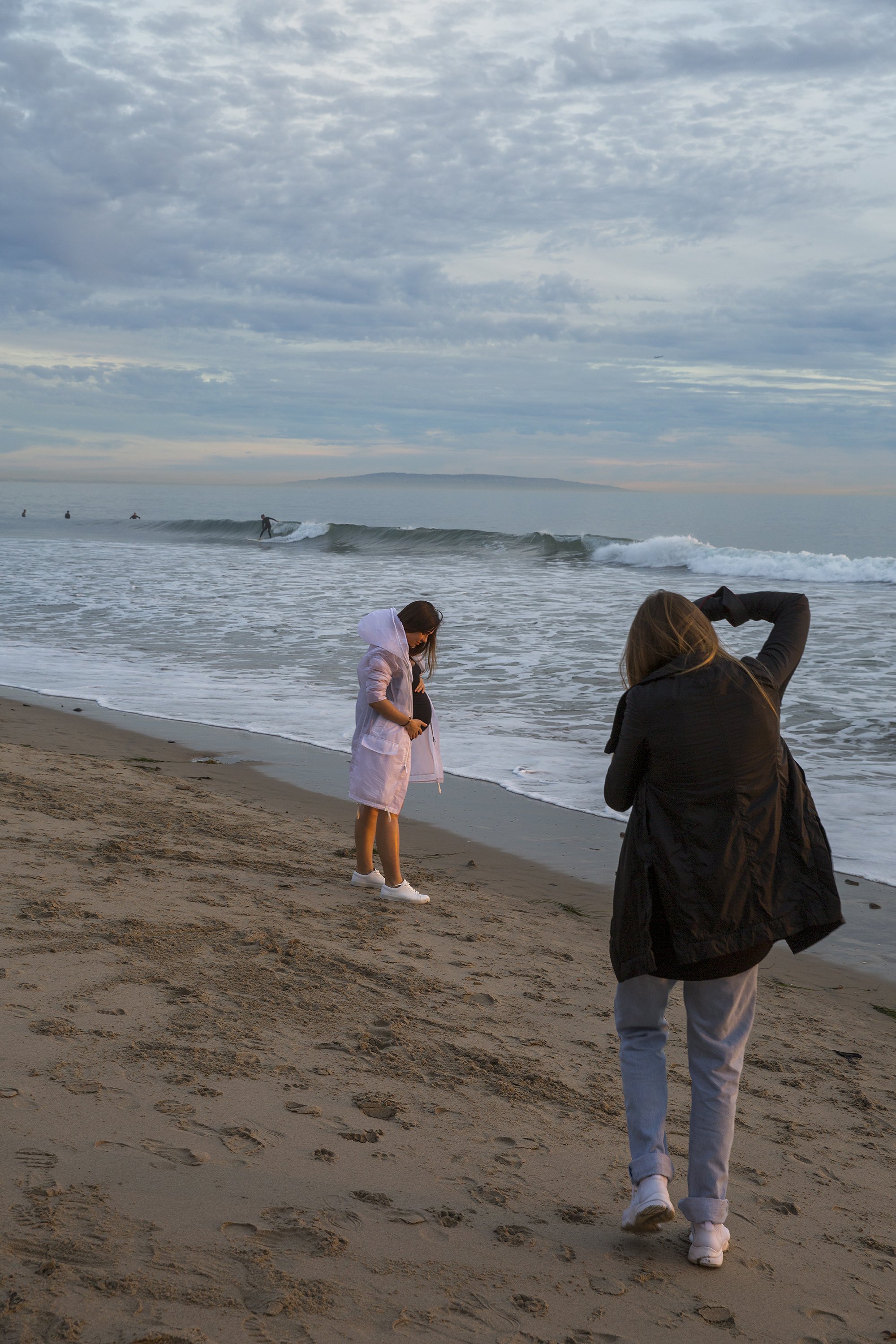But there are bad days; days where it’s hard to know whether to pull the car over here or keep driving. There are days when nothing pops, when the world feels drained of contrast or saturation or certainty. There are days when I’m unsure what I’m looking for. I’m not one of the handful of photographers with an obviously palpable visual style. Lee Friedlander can make one of his pictures anywhere. He visually warps and wonks and crosshatches and unkilters and ajumbles it, and it’s a Friedlander. Dostoevsky describes an artist with a similar, in this case, newly emerging style, in his story “Bobok”:
Yesterday a friend came to see me. “Your style is changing,” he said; “it is choppy: you chop and chop, and then a parenthesis, then a parenthesis in the parenthesis, then you stick in something else in brackets, then you begin chopping and chopping again.”
The rest of us have to have something to say. We need content, and it’s not always forthcoming. On these days, I fantasize about dead bodies. I’ve had long reveries, walking down a highway in Tennessee, or next to some unsparing spillway in northern New Jersey, about what would happen if I found a human corpse. Would I call the police? Would I photograph it first? What if the light was wrong? Would I wait to call the police? Would I try to make it a dramatic image, or simply stand back, and let the dead body emanate its own unacceptability? It’s happened enough times that I gave the phenomenon a name: “The Corpse of Content.” It stands for the photographer’s yearning for content so potent it’s taboo, that Fijian or Tongan or Malagasy word that means both forbidden and sacred.
At least part of the reason corpses are taboo is visual. We are wired to study and analyze human movement and we don’t know what to do with an inanimate body. A corpse is a corrupt patch in the lyrical visual code that allows us to recognize our lover’s hair swaying in the wind three blocks away, built from 300,000 years of scanning for hesitant sabertooth breath down there on the veldt. Photographers are X-Men whose mutation is visual acuity. We live to see distinctly, and need content to feed on, so the human corpse scratches a double Darwinian diet niche. You find an open parking spot. You find an interesting face in a crowd. You find an unusual angle. You find a dead body.
At least since Lascaux we’re familiar with how artists arrest motion, scattering the world with corpses. But little worlds of stillness are not the same as awkwardly, desperately still bodies in an otherwise flowing visual field. A corpse is like an instrumentalist in an ensemble who suddenly stops playing. On January 5, 1996 I attended the premier of a production of Leos Janacek’s The Makropulos Case at the Metropolitan Opera House. It was a glamorous night. Film director James Ivory had paid for my ticket. Lauren Bacall sat in front of us, wrapped in furs. The opera is about a century-long lawsuit brought by an immortal opera diva so she can finally die at age 337. Jesse Norman sang the role and I wish I could say she was magnificent. But in the first act, tenor Richard Versaille had a heart attack after delivering the line “You can only live so long!” and fell ten feet off a ladder, dead. Confusion was palpable. The conductor yelled, “Richard, are you all right?” The audience’s audible gasps reminded me of a recording from November, 1963. Boston Symphony Orchestra director Erich Leinsdorf turned to the audience and said, "The president of the United States has been the victim of an assassination." A wave of sighs and shrieks filled the auditorium until Leinsdorf continued, "We will play the funeral march from Beethoven’s Third Symphony." Stillness in chaos is irrational, impossible. The premier was cancelled. We went out for borscht.
…
In 2008 I went to Bulgaria to work on a project with the artist, Daniel Bozhkov. Daniel isn’t just any artist; he’s my favorite artist.
If you’ve ever felt you had a good idea, check it against one of Daniel’s. His ideas come complete with variations, internal memos, self-parodies, public, private and spiritual valences, hummingbird sugar sweetness and glad handed parody. He once worked with Hemingway lookalikes and professional perfumier to create “Eau d’Ernest,” a cologne that was supposed to smell like the author. He’s made a corn maze shaped like Larry King, and yoghurt modified by his own DNA. Daniel and I flew to Sofia on a discount airline, one where not only was there no free baggage or meal, you had to hold your breath to give the plane extra lift. We set up in the Hemat Hotel, an old communist-era structure I called the Soviet Marriot. On the first morning, I woke up early and had breakfast in the dining room. The more a country has been conquered, the better its cuisine. Bulgarian food is a lovely peace treaty of Turkish, Slavic and Greek and as I helped myself to my first minced meat Princesses, I glanced up at the breakfast bar TV. It was Bulgarian Shark Week, and a program was playing about Bethany Hamilton, the professional surfer whose leg was bitten off by a shark, and who has continued to surf and thrive as a champion. At least since the invention of movable type, humans have had to deal with the displacement of taking in one narrative while observing another. Think of the first crusader who sat on Jerusalem’s Temple Mount and whipped out his copy of the Canterbury Tales. We see it in Eve Arnold’s famous photograph of Marilyn Monroe reading Joyce on a child’s playground. I feel that way whenever “Sexy Sadie” comes on in Home Depot, and I did, again, watching this blonde Hawaiian girl’s tragedy and triumph play out in this all grey space, like an alarm waking you up in the tobacco-stained suit pocket of a KGB agent.
Our project was to search the city for imaginary former Soviet monuments. In the corner of one large square, there was a small alpine hut and a Coke machine, which we decided needed a Monument to Tooth Decay. I photographed the site, and Daniel sketched a giant tooth to be combined later into an architectural rendering. We drove toward the edge of the city, eventually stopping at a 60s-era sports complex. Like much late Communist architecture, it had the charm of dental surgery, and was filled with cavities to boot, with one or two shambolic badminton games going in inside. Just across a field of rubble another arena seemed totally abandoned. A guard sat at a barbed wire gate and after a short conversation, and briefer bribe, he chinned us through with a stern, “No FOTO!” I was carrying an enormous tripod and my 4x5 View Camera and brightened with my jauntiest We’re All in this Together, right, mate? Ignorant Foreigner smile.
Stripped to bare concrete, the place was quite decayed. Snapshots of almost naked women taped to the walls whispered that the building was being used as some sort of illegal rave or sex club. Mostly it spoke the universal language of the abandoned building: wet concrete or drywall or wood, similar in all cultures, and resolutely uninteresting to me. Just as religions and dictators tend to backdate their origin myths to give them more gravity, photographers try to sop up extra meaning by photographing old things. 100 percent of images are technically old, so we think of photography as connected to the past. But photographs age better when they start out fresh, addressing the contemporary world. In Latin, a patina is a shallow dish. After a few minutes, we knew there wasn’t anything to shoot. Snaking our way out, Daniel suddenly stopped. I saw his face, in everyday conversation as expressive as a Nepalese mask, distend with shock. A leg was sticking out from under a stairwell, its bare foot bloodied and distinctly, definitively still.
The leg was severed. Cut clean at the top of the pants, its naked foot was dirty on the heel and ball and cleaner if bloodier on the arch, showing that its owner had been walking (running?) barefoot in this powdery concrete. Here was my corpse, my content, filling this unphotographably clichéd space with pure immediate meaning. I knew I had to photograph it, despite the “NO FOTO” thug outside and the crackling fear of who may have caused this atrocity. But there was a problem. The leg’s severed edge was in a deep recessed shadow. No photograph of it in its current state would show that it wasn’t attached to, say, a passed out reveler. I took a deep breath, gathering strength from ancestor Alexander Gardner at Gettysburg, and dragged the leg into the light.
Today was one of those days. I stepped out of my house into the sparkling Lambrusco of a Los Angeles March morning and headed downhill toward Macarthur Park. I love the utterly aimless photographic walk. There is nothing that makes me happier than having nowhere to go and all day to get there. Most of the time when I try to go make a particular picture in a particular place, it doesn’t work. It’s sad watching the world not conform to my imagination. Part of the endless pleasure of being a photographer is the sweet tooth shudder of the Australopithecus deep within us, finding a field of salmonberries or a fresh killed dik dik. But sometimes you don’t find anything. You go hungry. Sometimes it feels like you’re not good at it.
You’re walking on a sidewalk on a street alive with light. The light is so pleasant it’s meaningful: library volumes of light, captains’ logs, best-selling second novels and dissertations of light. Light you could talk to all night and wake up knowing you’re in love. Everything looks good. But are there pictures here? You keep seeing things; interesting things. A man washing a phalanx of yellow handled shopping carts, the spray jetting off them scattering rainbows around. The sugar rush fills you with boldness and you scamper down an embankment to the supermarket parking lot. You nod at the workmen and they nod back. You’re in, right here right now in front of something beautiful and resonant. You’ve finally managed to cross the dance floor to talk to the high school crush and he’s all ears. You have something to say, but do you know how to say it? You can’t seem to find an obvious place to put the frame. You raise the camera up, but the buildings and cars in the background feel illegible. You don’t get the connection between the radiant ritual you’re observing and the stucco Tetris just beyond. You get down on your knees to frame out the city, but then you’re oversimplifying, and it feels cheap. Overcomplicated or Oversimplified; Too much sky or too much street. These dualisms are warning signs you’re not seeing a picture. You’re seeing a thing and trying to build a picture around it. That’s when you give up.
Giving up is hard to do, but sometimes it’s the only thing. For years I’ve threatened to write a book on the pleasures of quitting. I once answered an ad in the New York Times for a photo assistant and spent one grueling day making gin bottles glisten. During the next morning’s meeting this one-named photographer raved and raged and referred to himself with in the third person: “If you want to work for Hashi, you’ve got to be on time! If you want to work for Hashi, you do this all day and never complain!” I stood up from the meeting table, looked around at the eight or nine studio employees all with anywhere else eyes, and gathered myself. “I don’t want to work for Hashi,” I grinned, and descended down into 23rd street morning sun like Norma Desmond at the end of Sunset Boulevard. I spent the day watching Harold Lloyd films at the Museum of Modern Art and feeling utterly reborn
I spent half an hour trying unsuccessfully to make that shopping cart picture. Luckily I was rescued by my wife, who called, jumping through the phone, yelling, “Get over here immediately!” Her studio was in the Ladies Choir room of Immanuel Presbyterian in Koreatown. The church is a great argument for why we need organized religions: because they build enormous, ambitious buildings, which, when people stop believing in God, become community centers. This giant Gothic slot canyon is a hive of sincerity and inclusion, with services in Tagalog, Spanish, Korean, Ethiopian and other African languages. The church says it practices “Radical Hospitality,” housing undocumented immigrants and hosting to teacher trainers, homeless counters, actual human angels of all orientations. It feels as far from Hollywood as you can get, concerned only with quiet survival and fulfillment. I raced up flights of stairs to find my wife, eyes wild, pointing out the window. From its heavy stone sills, you could see down into what is usually an abandoned alley. But no place in Los Angeles remains no place for long. Below, a bloodied young man lay motionless in the trunk of the car. A woman stood over him, holding the hatch door open. Even amid a thicket of film equipment all I could see was the impossibility of death. To this day, when people look at this picture they often don’t notice the camera and sandbags and production assistant. A corpse rings a bell and it takes a minute for its soundwaves to decay. But once I realized I was looking at a film production I saw the entire picture immediately. Its frame and focus inevitable.
I’ve found that in most of the world, when you ask someone if you can photograph them, the acceptance rate is about 35%. People are shy, humble, skeptical, and in most of the U.S.A., increasingly paranoid. But in Southern California, the acceptance rate is closer to 75%. Are people more confident, better natured, neighborlier than elsewhere? Is it the weather; the slower pace of life? The central myth of the place is one of sudden glory, and in my conversations with its citizens, I find an almost universal hopefulness about their personal prospects. I met a man sitting under a canvas canopy in the parking lot of a gas station in Van Nuys. He was the proprietor of an illegal Razzle Dazzle type game, where, for prizes, marbles are dropped onto a sheet of a hundred holes. The game is designed to be confusing. No one ever wins Razzle Dazzle. This man had scars on his hands and face. He had been in jail. His girlfriend had stolen his money and his dog. But, he insisted, he was just about to open a string of topless carwashes. The American Dream. And while he waited for people to wander over from a bus stop to drop fistfuls of wadded dollars onto his carpet covered card table, he took out pencils to color in a page of butterflies swept through with the bubbly word “Believe.”
But even in a land where all human interactions can become publicity, you can’t just walk up and start photographing film productions. Dream factories are serious about their sleight of hand, even as they stage confessions in diners and autopsies in alleys. In the narration to Los Angeles Plays Itself, Thom Andersen writes, “Los Angeles is where the relation between reality and representation gets muddled.” Caterpillars crawl into cocoons before becoming butterflies. Playing dead might have been the first form of acting, but it can’t be easy to hold perfectly still in the trunk of a Corolla. The actor playing my corpse was good. The trunk kept opening and closing and he kept being there, inert as that thing they call a “still.” I was forced to peek over the windowsill so as not to be seen. The heavy stone and mullioned panes stayed out of focus in the foreground giving my still first person credentials: a P.O.V. A picture like that says, “I see.” My heart raced as I was spying on this secret within a secret, this double taboo: making a picture of a picture being made. And here, in your hands, the story of a story of story of a corpse.
#




























